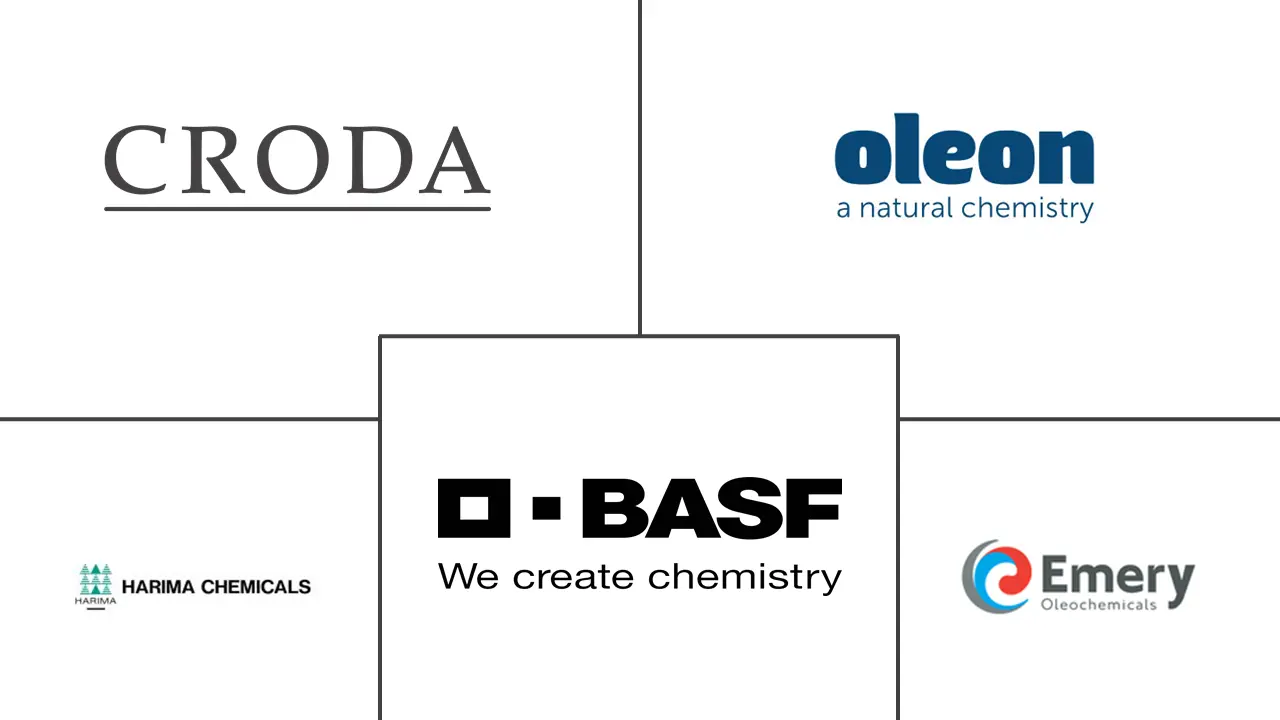Dimer Acid Market Size and Share
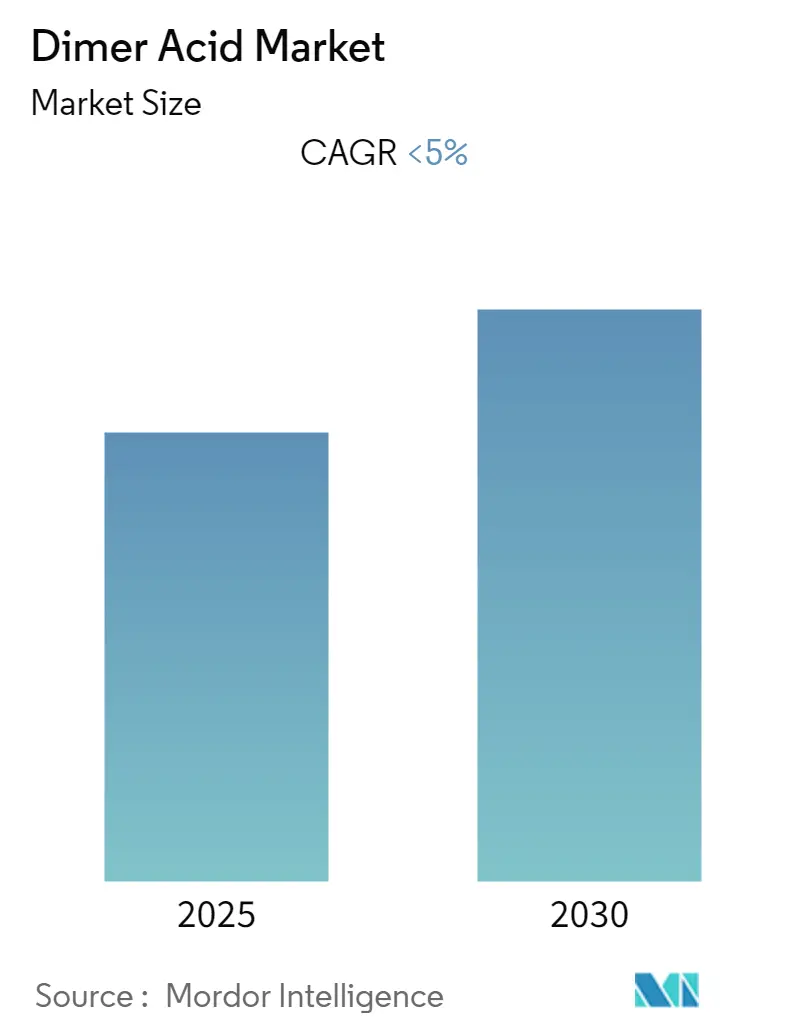
Dimer Acid Market Analysis by Mordor Intelligence
The Dimer Acid Market is expected to register a CAGR of less than 5% during the forecast period.
The market was hampered by the COVID-19 pandemic, as lockdowns, social distances, and trade sanctions triggered massive disruptions to global supply chain networks. The construction industry witnessed a decline due to the halt in activities. However, the condition recovered in 2021 is expected to benefit the market during the forecast period.
- Increasing applications for polyamide resins and growing usage of adhesives and fuel oil additives are driving market growth.
- Fluctuating raw material prices and uncertainty in the production of rapeseed oil, cottonseed oil, and soybean oil are expected to hinder market growth.
Global Dimer Acid Market Trends and Insights
Growing Demand for Alkyd Resins and Adhesives
- Dimer Acid is known as dimerized fatty acids and belongs to the dicarboxylic acid group. Dimer acid finds its application in surface coatings, lubricants, and fuel additives.
- Dimer acid is used to manufacture alkyd resins, mainly used for synthetic paintings and coatings and employed in the construction industry due to their properties.
- In 2021, the United States produced 123.9 billion pounds of resins. High-density polyethylene (HDPE) was the most produced resin that year, with an output of 22 billion pounds. Linear low-density polyethylene (LLDPE) accounted for a similar production volume, at 21.7 billion pounds.
- The properties of dimer acid include high molecular weight, difficulty in crystallization and distillation, highly flexible cyclic structure, soluble in hydrocarbons, and easily controlled reactivity.
- Polyamide hot-melt adhesives largely use dimer acid in the manufacturing process. These hot-melt adhesives are used on metal, paper, wood, and many plastics, like PVC, surface-treated polypropylene, and polyethylene, for excellent adhesion purposes, due to their characteristics.
- Synthetic polyamides are commonly used in textiles, the automotive industry, carpets, kitchen utensils, and sportswear due to their high durability and strength. The transportation manufacturing industry is the major consumer, accounting for 35% of polyamide (PA) consumption.
- Hot-melt adhesives have high thermal stability, melting points, and chemical resistance to many compounds. These properties are increasing the demand for these adhesives over other adhesives in the current scenario. In 2021, global polyamide production stood at 5.87 million metric tons.
- According to Statista, by 2027, the market value of adhesives is expected to increase to nearly USD 65 billion, and sealants will amount to just over USD 15 billion.
- Due to the strong demand from end-user industries such as food and beverages, increasing applications for adhesives in the packaging industry are driving the market for dimer acid.
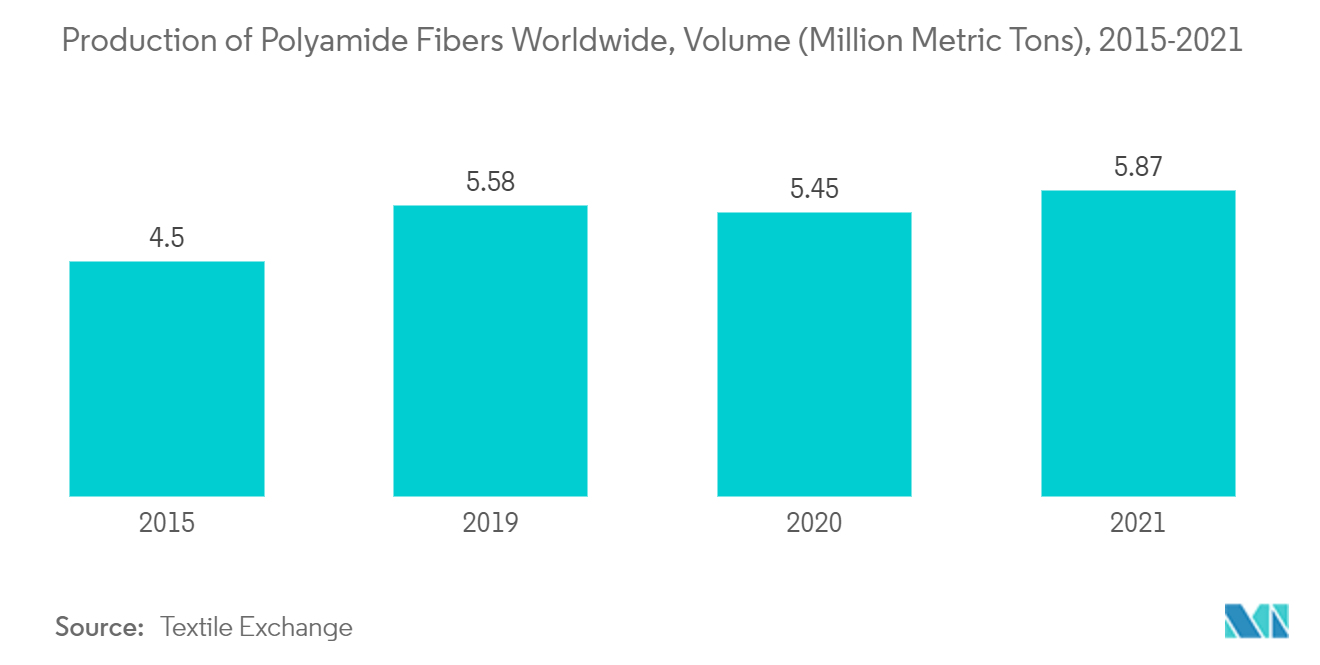
Asia-Pacific to Dominate the Market
- There have been gradual developments in the Asian-Pacific construction sector and the growing production. The demand for adhesives in China, India, and the ASEAN countries from other sectors is increasing the demand for dimer acid used in coatings and hot-melt adhesive production.
- The construction industry uses paints, coatings, and other resins for interior and exterior applications. These applications use dimer acid in production as it provides better durability against environmental changes, such as high temperatures, acid rain, and snow.
- The revenue of the global construction industry is expected to grow steadily over the next few years and reach USD 4.4 trillion by 2030. China is experiencing massive growth in its construction sector. According to the National Bureau of Statistics of China, in 2021, the construction output in China was valued at approximately USD 4.29 trillion.
- China is investing USD 1.43 trillion in major construction projects in the next five years till 2025. In 2022, India contributed about USD 640 billion to the construction industry due to government initiatives in infrastructure development and affordable housing.
- The raw materials used to prepare polyesters include all vegetable oils, fatty acids, and their derivatives. According to the US Department of Agriculture 2021, the consumption volume of vegetable oil in Japan amounted to around 75 thousand metric tons in 2021.
- In 2022, the leading country of sunflowerseed oil consumption was the EU-27, followed by China and India. According to the US Department of Agriculture, in 2021, China's population consumed around 2.6 million metric tons of sunflower seed oil.
- Increasing applications for coatings from various industries and growing demand for polyamide resins for different applications are expected to drive the market for dimer acid through the years to come.
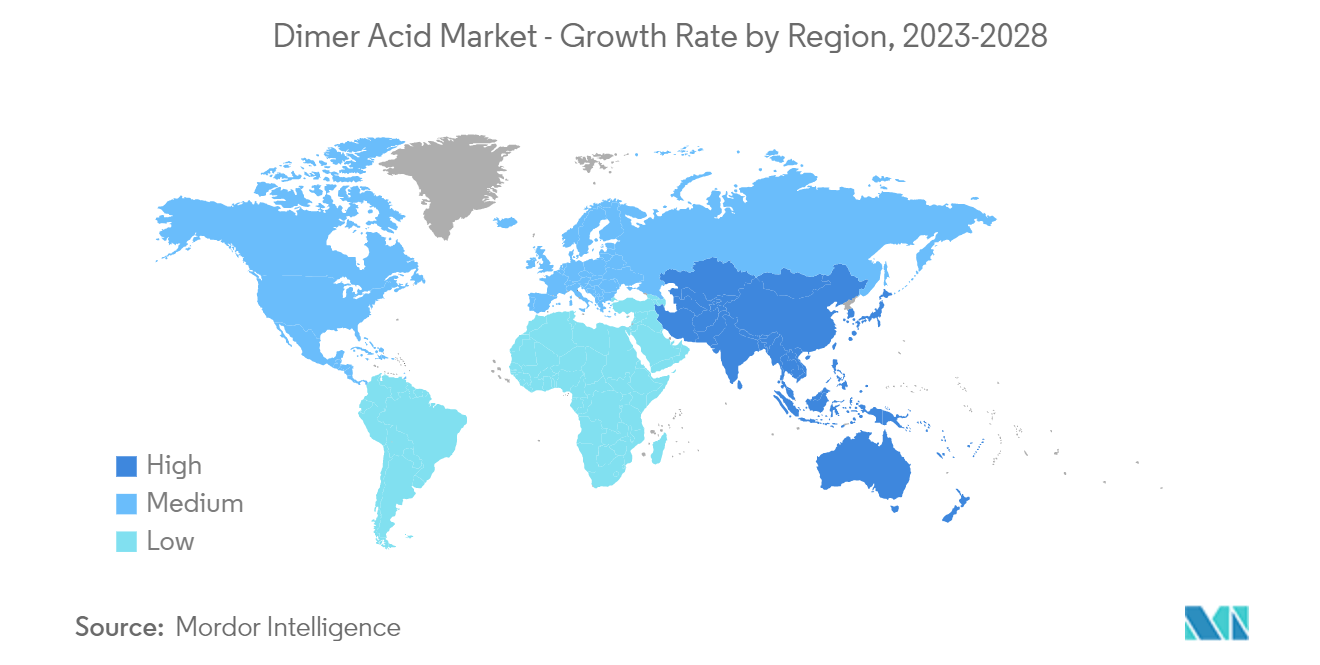
Competitive Landscape
The dimer acid market is partially consolidated, with a few major players dominating a significant portion. Some major companies are BASF, Croda International, Oleon NV, Harima Chemicals, and Emery Oleochemicals.
Dimer Acid Industry Leaders
-
BASF
-
Croda International
-
Oleon N.V
-
Harima Chemicals
-
Emery Oleochemicals
- *Disclaimer: Major Players sorted in no particular order
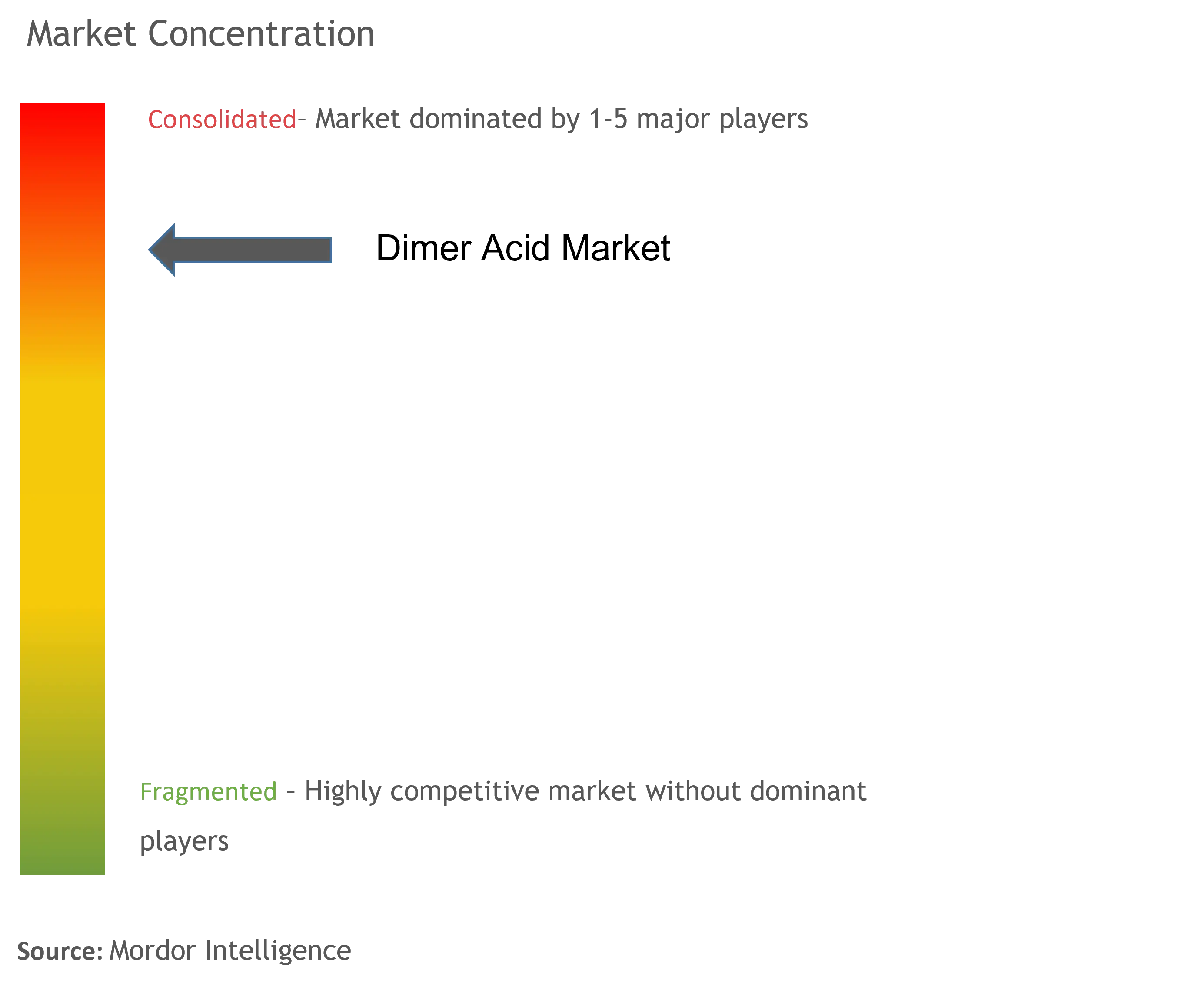
Recent Industry Developments
- February 2023: Croda International Plc acquired a global leader in premium, biotechnology-derived beauty actives, Solus Biotech. The acquisition provides Croda International Plc access to Solus' existing biotech-derived ceramide and phospholipid technologies and its emerging capabilities in natural retinol.
- December 2022: Oleon NV expanded its global footprint by acquiring a blending plant in Conroe, Texas, with an investment of USD 50 million. The company could deliver warehousing and blending services for different markets with this new manufacturing plant.
Global Dimer Acid Market Report Scope
Dimer acids (dimerized fatty acids) are dicarboxylic acids produced by dimerizing unsaturated fatty acids. Dimer acids are light yellow transparent viscous liquids having non-toxic nature. Dimer acids can be used to synthesize polyamide resins and hot melt adhesives. They are also used in alkyd resins, adhesives, surfactants, fuel oil additives, and lubricants. The dimer acid market is segmented by application and geography. By application, the market is segmented into alkyd resins, adhesives and elastomers, lubricants, polyamide resin, fuel oil additives, and other applications. The report also covers the market size and forecasts for the dimer acid market in 15 countries across major regions. For each segment, the market sizing and forecasts have been done based on volume (kilo metric tons).
| Alkyd Resins |
| Adhesives and Elastomers |
| Lubricants |
| Polyamide Resin |
| Fuel Oil Additives |
| Other Applications |
| Asia-Pacific | China |
| India | |
| Japan | |
| South Korea | |
| Rest of Asia-Pacific | |
| North America | United States |
| Canada | |
| Mexico | |
| Europe | Germany |
| United Kingdom | |
| France | |
| Italy | |
| Rest of Europe | |
| South America | Brazil |
| Argentina | |
| Rest of South America | |
| Middle-East and Africa | Saudi Arabia |
| South Africa | |
| Rest of Middle-East and Africa |
| Application | Alkyd Resins | |
| Adhesives and Elastomers | ||
| Lubricants | ||
| Polyamide Resin | ||
| Fuel Oil Additives | ||
| Other Applications | ||
| Geography | Asia-Pacific | China |
| India | ||
| Japan | ||
| South Korea | ||
| Rest of Asia-Pacific | ||
| North America | United States | |
| Canada | ||
| Mexico | ||
| Europe | Germany | |
| United Kingdom | ||
| France | ||
| Italy | ||
| Rest of Europe | ||
| South America | Brazil | |
| Argentina | ||
| Rest of South America | ||
| Middle-East and Africa | Saudi Arabia | |
| South Africa | ||
| Rest of Middle-East and Africa | ||
Key Questions Answered in the Report
What is the current Dimer Acid Market size?
The Dimer Acid Market is projected to register a CAGR of less than 5% during the forecast period (2025-2030)
Who are the key players in Dimer Acid Market?
BASF, Croda International, Oleon N.V, Harima Chemicals and Emery Oleochemicals are the major companies operating in the Dimer Acid Market.
Which is the fastest growing region in Dimer Acid Market?
Asia Pacific is estimated to grow at the highest CAGR over the forecast period (2025-2030).
Which region has the biggest share in Dimer Acid Market?
In 2025, the Asia Pacific accounts for the largest market share in Dimer Acid Market.
What years does this Dimer Acid Market cover?
The report covers the Dimer Acid Market historical market size for years: 2019, 2020, 2021, 2022, 2023 and 2024. The report also forecasts the Dimer Acid Market size for years: 2025, 2026, 2027, 2028, 2029 and 2030.
Page last updated on:
Dimer Acid Market Report
Statistics for the 2025 Dimer Acid market share, size and revenue growth rate, created by Mordor Intelligence™ Industry Reports. Dimer Acid analysis includes a market forecast outlook for 2025 to 2030 and historical overview. Get a sample of this industry analysis as a free report PDF download.
